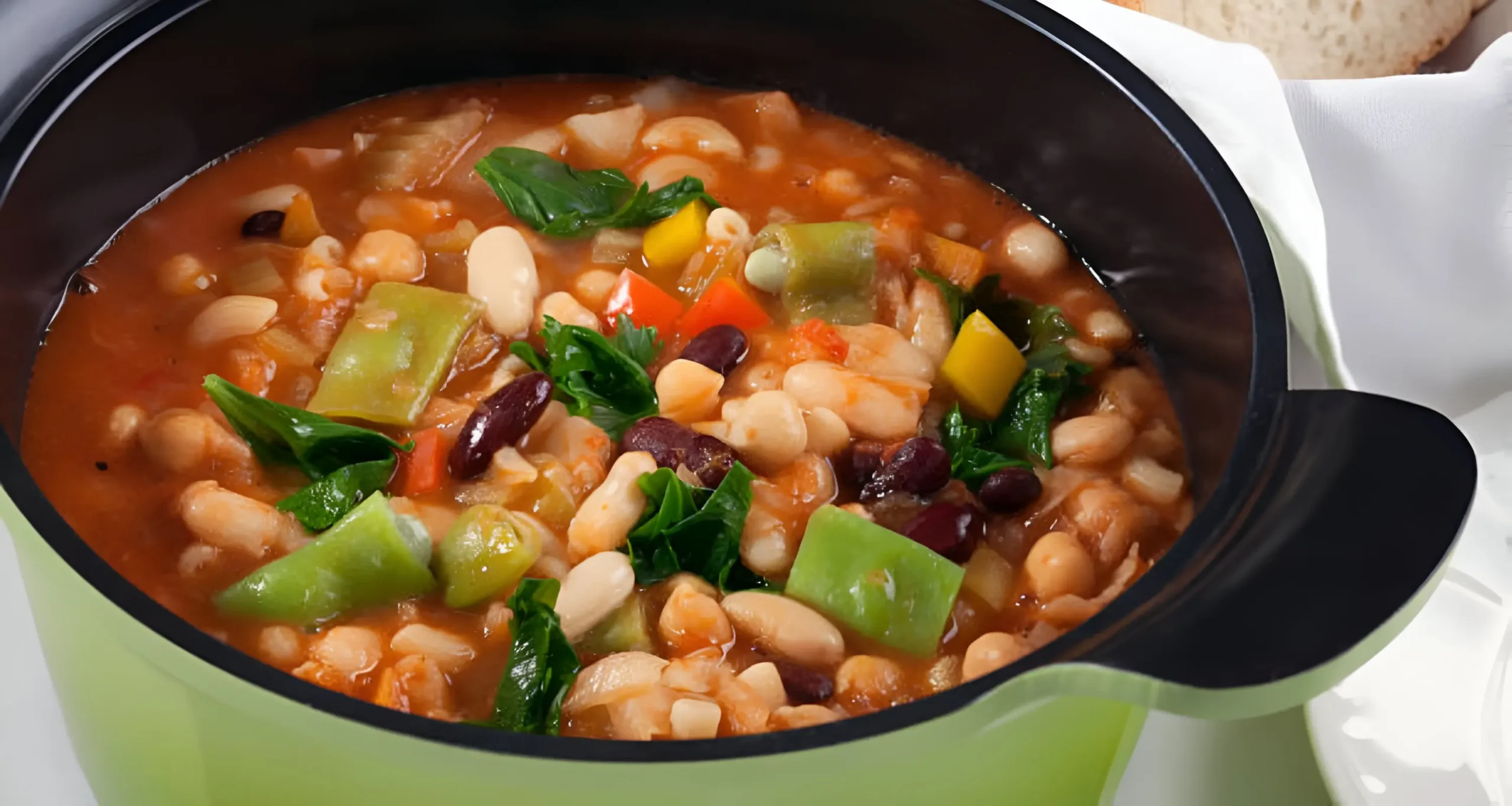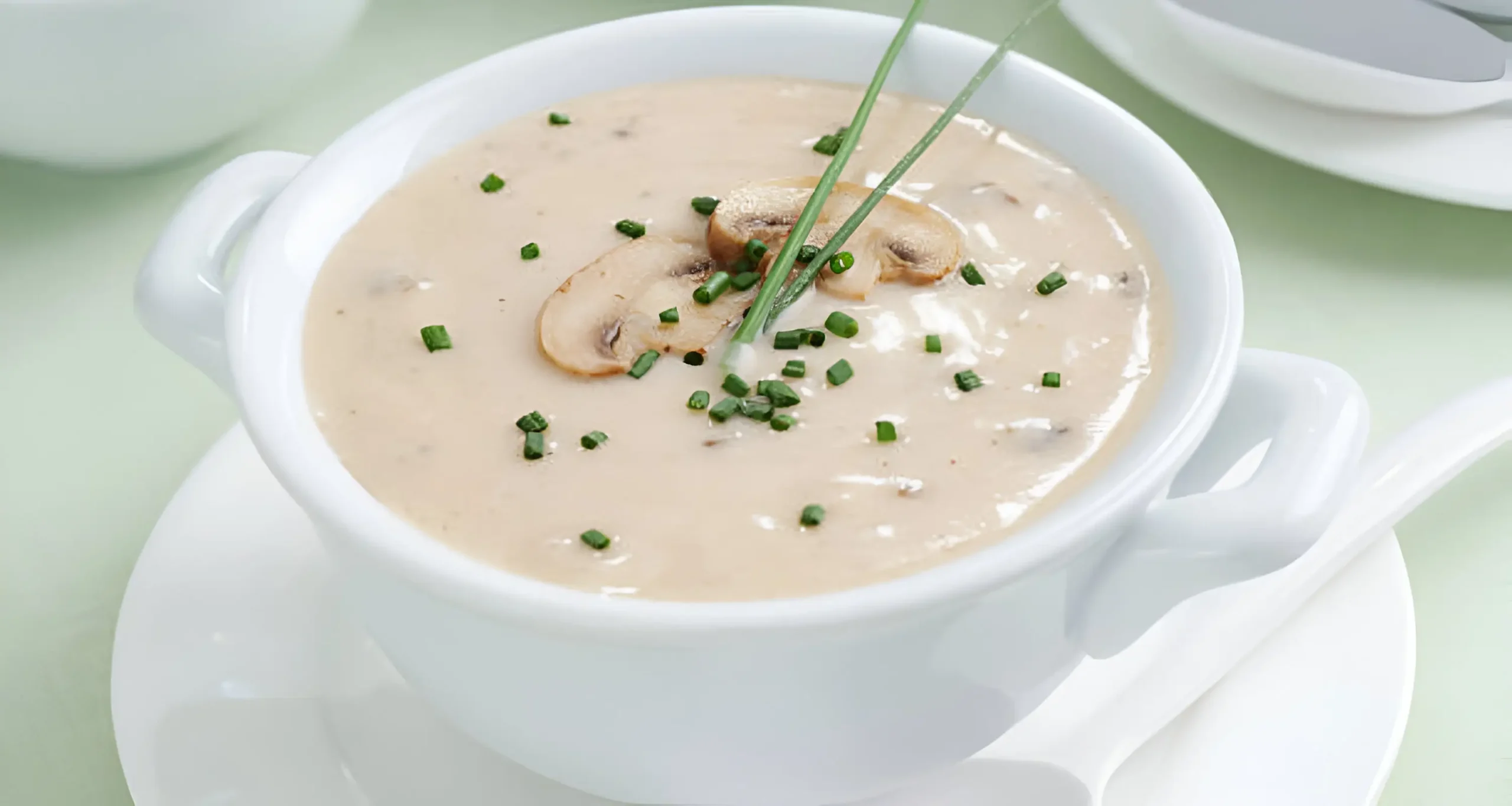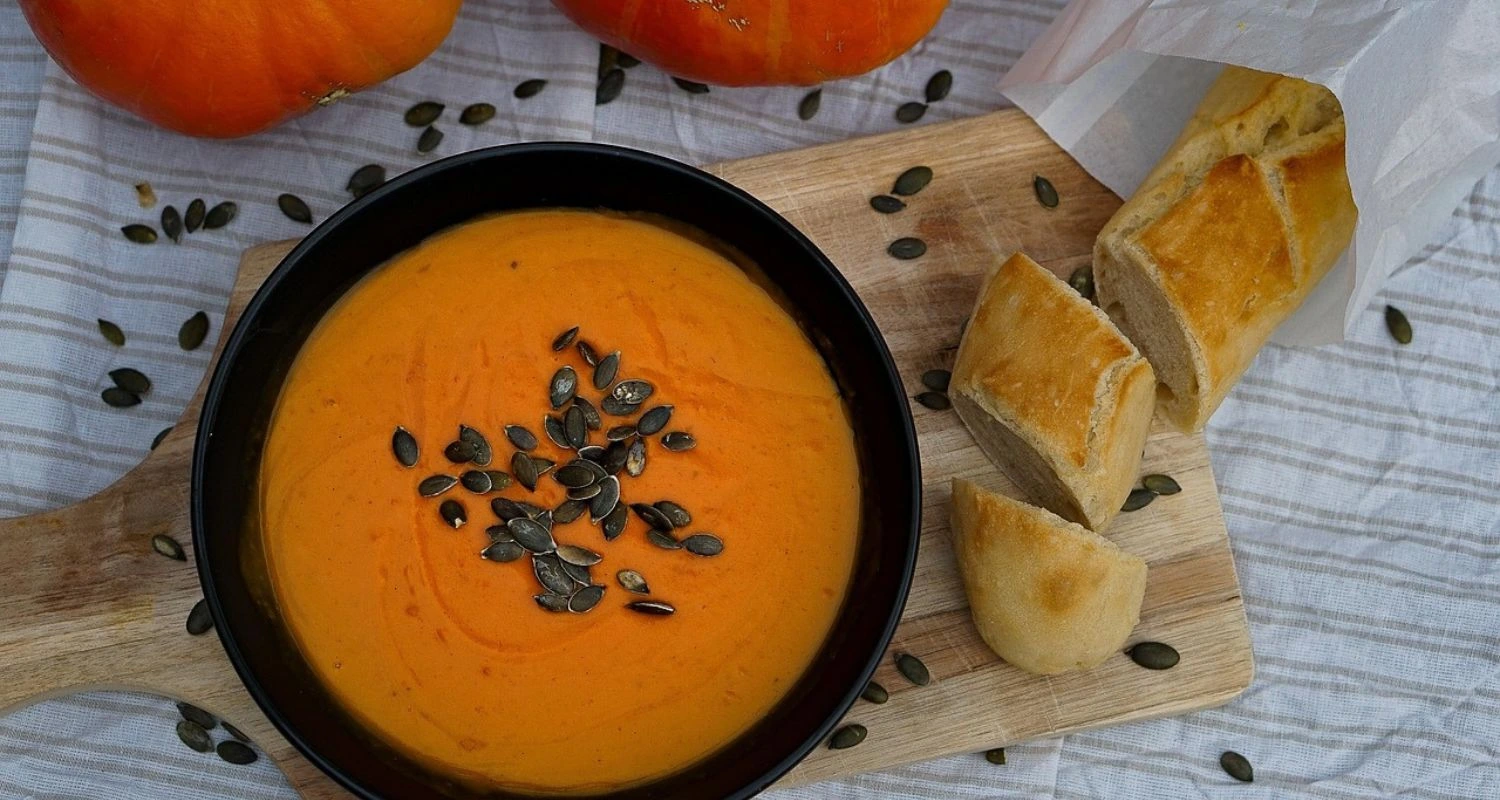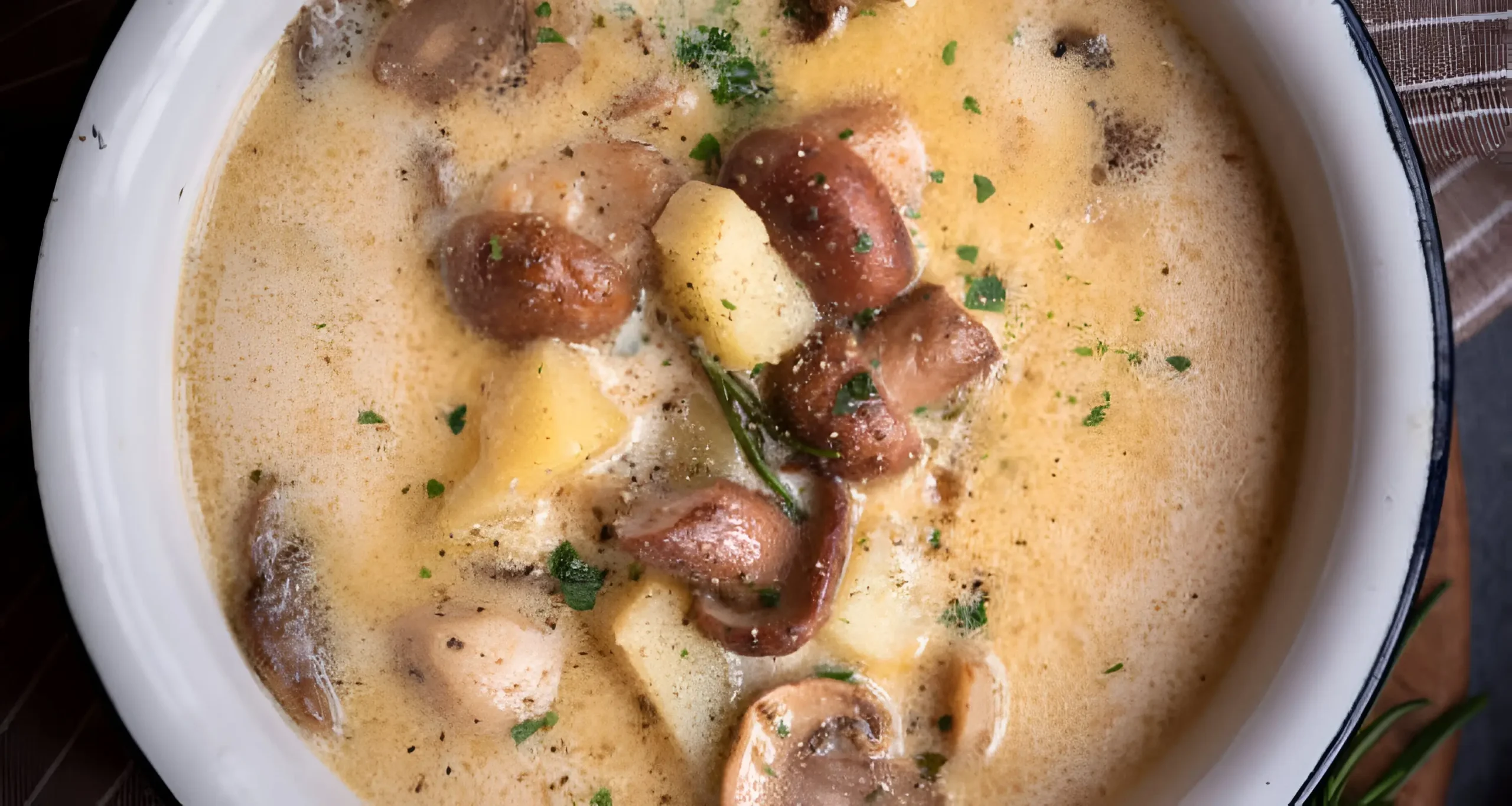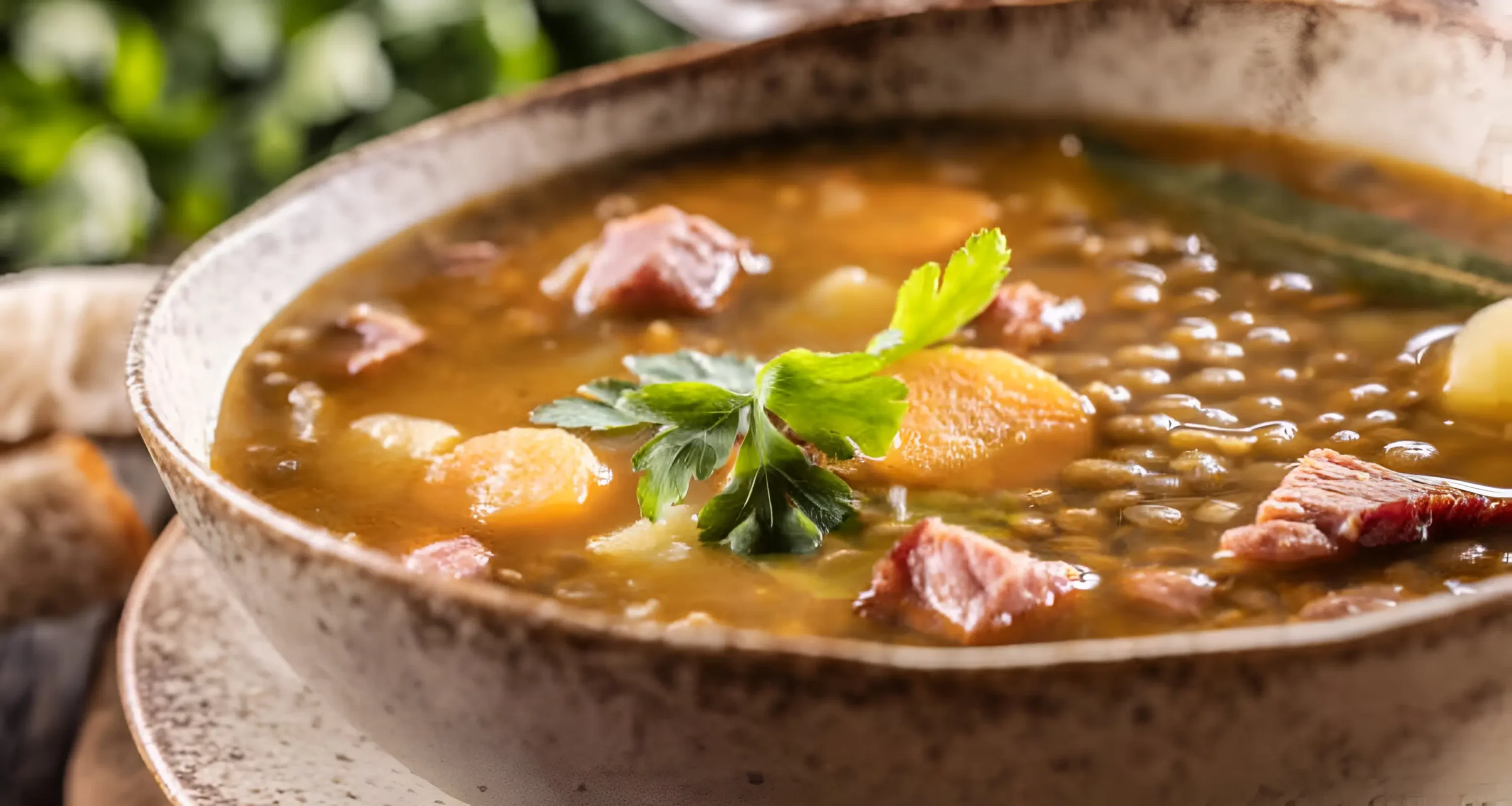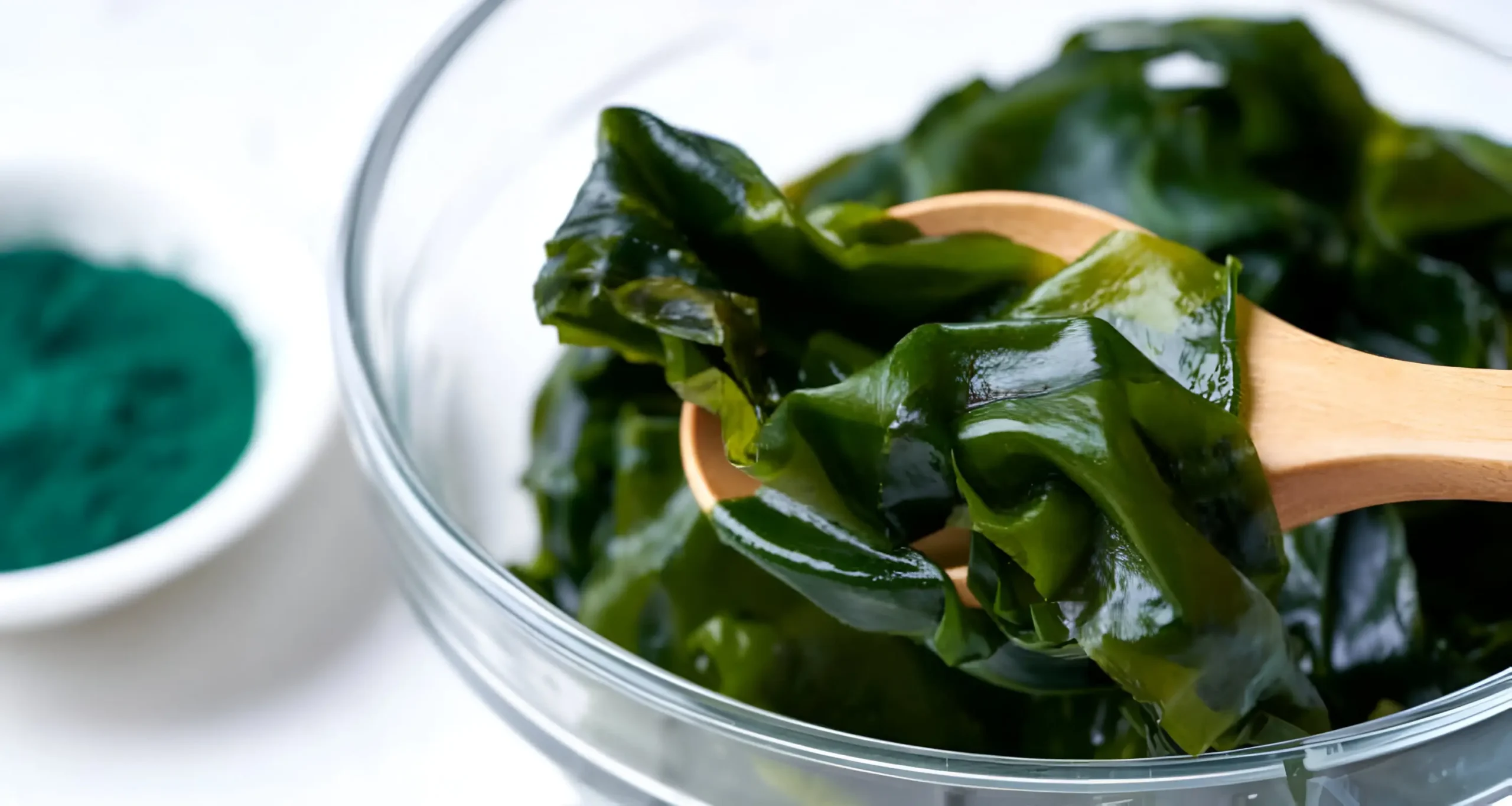Split Pea Soup: 9 Simple Mistakes to Avoid for the Best Taste

There’s nothing like a warm bowl of Split Pea Soup on a chilly night. Maybe you remember your grandmother’s steamy Split Pea Soup fogging the windows. Or your first taste of ham and split pea at a deli, wishing you could make it at home.
Great Split Pea Soup isn’t about rare spices. It’s about simple techniques done right.
This guide will fix the nine most common mistakes in making split pea soup. You’ll learn about green and yellow split peas, why dried peas need care, and how small choices make a creamy soup. Whether you like ham and split pea or vegan pea soup, technique is key.
This article has everything you need: picking the right peas, using aromatics and seasoning, and cooking times. It also covers protein pairing, blending, and storing your split pea soup. If you cook in the United States, these tips will help you avoid grainy or salty soups.
Quick takeaway: with the right peas, timing, liquid, and blending, you can avoid nine common mistakes. This way, you’ll make a rich, creamy pea soup every time.
Key Takeaways
- Choose fresh dried split peas (green or yellow) for the best base.
- Technique — not exotic ingredients — creates a true creamy pea soup.
- Time aromatics and salt carefully to avoid bitterness or grainy texture.
- Pair ham thoughtfully for depth, or use smoked and umami ingredients for a vegan pea soup.
- Small adjustments in liquid and blending yield consistent, restaurant-quality results.
Avoiding Common Errors with Dried Peas
When you shop and prep for Split Pea Soup, small choices shape the end result. This guide helps you pick the right split peas, check quality, and decide whether to soak. Use these tips to make your split pea soup ingredients perform at their best.
Choosing the right type of split peas
Green and yellow split peas vary in both flavor and color. Green peas have a slightly earthier flavor and a more vivid hue. Yellow peas taste milder and yield a creamier look and mouthfeel.
For consistent results, buy trusted brands like Bob’s Red Mill or King Arthur. Their split peas selection is reliable across batches, making timing and texture easier to predict.
How to check for freshness and quality
Inspect packaging dates or best-by labels before you buy. Look for uniform color and no debris in the bag. Avoid packages with a musty or stale smell.
Store dried peas in airtight glass jars or food-safe plastic in a cool, dark place. Older peas take longer to soften and can become grainy, so pea soup freshness matters for final texture.
Soaking vs. not soaking: myths and realities
Split peas are split and cook faster than whole beans, so soaking is usually unnecessary. A quick cold rinse removes dust and loose skins without washing away flavor.
If your peas are very old, a short soak can reduce cook time. Keep in mind that pre-soaking may slightly lessen depth of flavor, so reserve soaking for aged or inconsistent batches. Discard any discolored or insect-infested peas for safety.
| Topic | Green Split Peas | Yellow Split Peas |
|---|---|---|
| Flavor | Earthy, robust | Mild, slightly sweet |
| Color | Vibrant green | Warm yellow |
| Texture when cooked | Holds shape a bit more, yet creamy | Smoother, creamier finish |
| Best use | Rustic Split Pea Soup with herbs | Silky pureed pea soups |
| Brands to try | Bob’s Red Mill, King Arthur | Bob’s Red Mill, Arrowhead Mills |
| Soaking recommendation | Not required; optional for old peas | Not required; optional for old peas |
| Signs of poor quality | Musty smell, uneven color, debris | Musty smell, discoloration, insect damage |
Properly Preparing Aromatics for Depth of Flavor
Getting your aromatics right changes the whole character of split pea soup. Start with fresh produce and a classic balance. This way, each bite carries sweetness, body, and clarity. Small steps in prep and timing create a creamy pea soup flavor without masking the peas themselves.
Best onions, carrots, and celery practices
Prepare a mirepoix for split pea soup using a 2:1:1 ratio: two parts onion to one part carrot and one part celery. Yellow or sweet onions like Vidalia or Walla Walla bring mildness that supports, not overwhelms. Dice carrots and celery finely so they soften at the same rate as the onions.
Choose crisp celery and firm carrots from trusted sources such as Dole or your local farmers’ market. Fresh aromatics reduce cooking time and lift the overall profile of pea soup onions in the pot.
Sweating aromatics vs. browning for different flavor profiles
Sweating aromatics over low heat with a pinch of salt releases their natural sweetness without causing caramelization. This method builds a clean base ideal when you want a silky, classic soup and to emphasize creamy pea soup flavor.
Browning aromatics on higher heat creates fond and roasted notes. Use this technique when pairing with smoky ham or when you want deeper, more savory results. Choose butter for a richer finish or olive oil for a lighter, more Mediterranean-leaning result.
Timing aromatics to avoid bitterness
Overcooked garlic or onions on high heat will turn bitter. Add garlic toward the end of the sauté and remove any browned bits that could taint the broth. Keep an eye on color; pale translucence signals readiness for the next step.
Add sturdy herbs like thyme early so their oils infuse during simmering. Save delicate herbs, such as parsley or dill, for the end to preserve bright, fresh notes that lift the final bowl.
Salt and Seasoning Mistakes That Ruin Texture
Properly balancing salt and seasonings is essential for both flavor and texture. A little salt at the start can prevent blandness and a grainy texture. Use a step-by-step approach to keep your seasoning balanced.
When to salt
Many think salt makes legumes tough. But, research shows a moderate amount early on won’t stop split peas from softening. Start with a small pinch while cooking onions and carrots. Aim for 3/4 to 1 teaspoon kosher salt per cup of dried peas, then adjust to taste.
Balancing savory seasonings
Bay leaf and thyme add depth early on. Use rosemary with caution, as it can overpower. Stir in black pepper near the end of cooking to add a fresh burst of flavor. Smoked paprika enhances the body of the split pea soup, perfect with ham.
Vegan adjustments
For vegan soups, boost umami with miso, soy sauce, or nutritional yeast. Add these towards the end to control sodium. Taste as you go and adjust in small increments to preserve texture.
Using stock or water and how it affects seasoning
Stock adds flavor and reduces the need for extra seasoning. Choose low-sodium options like Swanson or Pacific Foods. If using water, add concentrated flavor later with bouillon paste, miso, or yeast flakes.
Adjustments vary by recipe. For ham and split pea soup, use less salt and focus on smoky flavors. For vegan soups, build savory depth with plant-based umami and fresh herbs.
Overcooking and Undercooking Troubles

Achieving the perfect texture for split peas is crucial for a creamy, smooth split pea soup. Look for the right feel, color, and use timers. This way, you can control the cooking time and texture every time.
How to tell when split peas are perfectly tender
Press a pea with a spoon against the pot. It should mash easily, leaving a smooth paste. Taste it; the peas should feel silky, not coarse.
Stovetop cooking times vary from 45 to 75 minutes. Check at 30–40 minutes for fresh peas. Older peas need more time, so adjust the cooking time.
Preventing mushy soup while achieving creaminess
Simmer at a medium-low heat. A high boil can make the split pea soup watery. Stir gently to avoid sticking.
To add creaminess, puree some of the split pea soup and mix it back in. This method maintains a smooth texture while preserving the integrity of the peas.
Using an Instant Pot? Cook under pressure for 10–15 minutes. Then, let it release naturally. This method avoids overcooking and gives a smooth finish.
Using timers and visual cues for consistent results
Set a timer to remind you to check. Start visual checks at 30–40 minutes for stovetop cooking. Look for a deeper color and a thin foam on the surface.
Watch for evaporation. Add hot stock or water to keep the simmer steady. Trust your touch and taste for the perfect texture, not just the timer.
Liquid Ratios for Creamy Pea Soup Without Dairy
Balancing the liquid properly is essential for a silky, smooth bowl. Plan your cooking method, as evaporation and time affect the soup’s feel. Below, find ratios and tips for a rich, dairy-free split pea soup.
How much liquid per cup of split peas
For a thick split pea soup, use 4 to 5 cups of liquid per 1 cup of peas. For a brothy soup, aim for 5 to 6 cups. Slow cookers need more liquid, while Instant Pots can start with less.
Creating a creamy pea soup texture without cream
Simmer the peas gently to thicken the split pea soup. Use an immersion blender or blend half and stir back in. For extra creaminess, mash in a cooked potato or carrot, or whisk in tahini.
Add a splash of oat or cashew milk for richness. These milks enhance texture without adding dairy.
Adjusting thickness after cooking
If the split pea soup is too thick, add more warm liquid slowly. If the soup is too thin, simmer it uncovered to reduce and thicken. Quick thickeners include smashing peas, blending in cooked rice, or adding mashed potato flakes.
Keep hot stock ready for adjustments. Small tweaks at the end ensure the perfect texture.
Ham and Split Pea: Pairing Proteins Without Overpowering Flavor
When preparing ham and split pea soup, strive for a well-balanced flavor. Choose the right ham cut and add it at the right time. This way, the meat enhances the broth without overpowering the peas.
Choosing the right ham or ham bone
For a deeper flavor, choose a smoked ham hock, bone-in ham shank, or a meaty ham bone. These cuts contribute collagen and smoky notes, enhancing the broth’s richness. If you prefer a milder taste, use leftover cooked ham from brands like Smithfield or a store-roasted ham.
Stay away from overly processed deli ham unless you rinse it and use it sparingly. Processed ham can add too much salt and a flat flavor that overpowers the peas.
How long to simmer with ham for best flavor infusion
Start with a ham bone or hock and the peas for the best flavor. Simmer gently for 45 to 90 minutes to extract all the goodness without breaking down the peas too soon.
If using diced leftover ham, add it in the last 15 to 20 minutes. This keeps the meat tender and prevents the broth from becoming too salty.
Removing or shredding ham for optimal texture
Once the ham bone is tender, remove it from the soup and allow it to cool slightly. Then, pick off the meat and shred or chop it into bite-sized pieces. Return most of it to the split pea soup.
Save some larger chunks for later. Stir them in after pureeing the base for a creamy texture with meaty bites. Skim off excess fat for a lighter split pea soup.
If adding cold ham, reheat the split pea soup until the meat reaches 165°F for food safety.
| Protein Choice | Typical Use | Flavor Impact | Best Addition Time |
|---|---|---|---|
| Smoked ham hock | Traditional recipes | Deep smoky, gelatinous broth | Start with peas |
| Bone-in ham shank | Hearty, meaty soups | Rich mouthfeel, savory depth | Start with peas |
| Leftover cooked ham (Smithfield or store-roasted) | Milder, quicker prep | Subtle ham flavor, less salt | Last 15–20 minutes |
| Processed deli ham | Quick fix, not recommended | Can be too salty or uniform | Use sparingly, near end after rinsing |
Vegan Pea Soup Alternatives That Stil Impress
You can make a plant-based pea soup that’s rich and savory. Start by adding smoked paprika and a bit of liquid smoke for depth. Mix in white or red miso, tamari, and nutritional yeast for umami.
Plant-based flavor boosters: smoked paprika, liquid smoke, miso
Use small amounts to avoid overpowering the split pea soup. Try 1/2 teaspoon of smoked paprika, 1/2 teaspoon of liquid smoke, and 1 tablespoon of miso per 4–6 servings. Add a teaspoon of tamari or soy sauce for salty depth. Nutritional yeast adds a nutty, cheesy flavor.
Vegan protein swaps for a hearty soup
Choose protein that holds texture and soaks up flavor. Smoked tempeh from Lightlife works well when diced and browned. Nasoya tofu cubes can be pan-fried for a firmer bite.
Cooked lentils, canned white beans, or chickpeas thicken the soup and boost protein. For a meaty chew, consider seitan pieces or pan-seared mushrooms. Lightlife tempeh and Nasoya tofu are reliable brands for plant-based pea soup.
Maintaining mouthfeel without animal fat
Mimic richness with oils and creamy purées. A tablespoon or two of olive oil enhances silkiness. Blend roasted cashews with a bit of cooking liquid for a smooth, creamy finish.
Use a tablespoon of tahini or a half-cup of pureed potato to thicken without heaviness. To enhance smoky flavors, add mushroom broth or the soaking liquid from rehydrated porcini mushrooms along with smoked paprika. These swaps preserve mouthfeel and help your vegan pea soup impress even non-vegans.
Blending and Texture Choices for Presentation

How you finish your split pea soup matters. It affects taste and looks. You can go for silky, chunky, or rustic textures.
When to puree fully versus leaving chunky
Puree the split pea soup for a smooth, fancy look. This method hides fibrous bits and feels silky in your mouth. It’s perfect with olive oil or crème fraîche.
For a chunkier soup, blend partially. This keeps ham and veggies whole. It’s great for families who love texture.
For a stew-like soup, leave it mostly as is. This method preserves whole peas and ham, giving the soup a satisfying, hearty texture. It’s cozy and feels like home.
Tools for the job: immersion blender, regular blender, food mill
An immersion blender is quick and safe for hot split pea soup. Use short pulses and move the wand to avoid overdoing it. Cuisinart makes reliable blenders.
For the smoothest soup, use a high-speed blender like a Vitamix. Blend in batches and vent the lid to release steam. This makes the soup silky.
A food mill gives a smooth texture without overworking the split pea soup. It’s good for removing skins and making the split pea soup even. It avoids the froth some blenders add.
Adding final texture: croutons, crispy shallots, herbs
Contrast is key. Top the soup with crunchy additions such as croutons, toasted pumpkin seeds, or crispy pancetta. Vegetarians can use fried shallots or toasted seeds.
Fresh herbs like parsley, chives, and dill add color and freshness. These toppings help offset the richness of the split pea soup. Finish with yogurt or crème fraîche for tang and shine.
Select garnishes that complement your soup’s style. Even small additions can elevate a simple soup into an impressive dish, suitable for anything from casual dinners to elegant occasions.
Storage and Reheating Tips to Preserve Flavor
Keeping your split pea soup fresh is all about the right storage. Cool it down to room temperature in under two hours. Then, move it to shallow, airtight containers. Always follow USDA guidelines to avoid bacterial growth.
Store the soup in the refrigerator for up to four days. For longer preservation, freeze it in containers or bags, leaving room for expansion and labeling with the date. For optimal flavor, use frozen soup within three months.
Remember, the longer it sits, the better it tastes. The peas absorb the flavors, making it richer. It will also thicken up, becoming more enjoyable the next day.
Before serving, taste and adjust the seasoning. If it’s too bland, add a bit of salt or lemon juice. A bit of butter or olive oil can also enhance the flavor.
Reheat the soup gently to maintain its texture. Warm it on the stovetop over low heat, stirring frequently. If it becomes too thick, stir in a bit of hot water to adjust consistency.
If it’s frozen, thaw it in the fridge or use the microwave defrost setting. When reheating in the microwave, use medium power and stir every 30 to 60 seconds. This keeps the soup smooth and prevents fat separation.
Here’s a quick guide to keep your soup tasting great:
- Cool to room temperature within two hours.
- Refrigerate in shallow, airtight containers.
- Freeze with headspace and label with date.
- Taste and adjust seasoning after resting.
- Reheat gently over medium-low heat, stirring often.
| Step | Action | Why it matters |
|---|---|---|
| Cooling | Bring to room temp within 2 hours, then refrigerate | Prevents bacterial growth and preserves pea texture |
| Short-term storage | Refrigerate in shallow airtight containers for up to 4 days | Keeps freshness and eases reheating |
| Long-term storage | Freeze in labeled containers or bags for up to 3 months | Maintains quality; headspace prevents bursting |
| Flavor finishing | Taste next day and adjust salt or add acid | Resting enhances overnight pea soup flavor and balance |
| Reheating | Warm gently on stovetop; add hot stock if too thick | Prevents scorching, separation, and grainy texture |
Common Flavor Killers and How to Fix Them
If your split pea soup tastes flat, salty, or has an odd texture, small fixes can save the pot. Start with a quick taste test and work in measured amounts. A spoonful of intense ingredients brings depth fast without masking the peas.
Fixing bland soup quickly
Add concentrated umami like miso or a teaspoon of Better Than Bouillon to boost savory notes. Low-sodium soy sauce works too if you want an Asian twist. Lift the flavors with a splash of lemon juice or apple cider vinegar, then finish with fresh parsley or a small pat of butter to enhance the mouthfeel. For smoke, use smoked paprika or a drop of liquid smoke carefully to avoid overpowering the base.
Repairing overly salty or acidic batches
If the pot is too salty, dilute with unsalted stock or water and simmer to marry flavors. Toss in a few peeled raw potato chunks; they absorb excess salt and can be removed before serving. Balance too-tart acidity with a pinch of sugar, honey, or grated raw apple. For vinegar that went too far, add a tiny pinch of baking soda to neutralize the acid, stirring slowly and tasting as you go.
Dealing with grainy or split textures
Grainy soup from undercooked peas needs gentle simmering until the peas soften, then puree part of the batch to smooth texture. If peas broke down and the split pea soup seems mealy, blend to a velvety consistency for a creamy pea soup rescue and add crunchy toppings like croutons or fried shallots for contrast. If the soup has separated, whisk in a spoon of cream or plant milk over low heat to re-emulsify and restore body.
When you want to repair salty soup fast, combine dilution with textural fixes so flavor and mouthfeel return in balance. Use these targeted methods to fix bland split pea soup or apply a grainy pea soup fix when needed, keeping adjustments small and tasting often.
Conclusion
You’ve learned about nine common mistakes in making Split Pea Soup. These include choosing the wrong peas and ignoring freshness. Also, mishandling aromatics and adding salt at the wrong time can ruin it.
Misjudging cooking time and using poor liquid ratios are other issues. Letting ham overpower the split pea soup and overlooking vegan options are also mistakes. Not blending or storing the soup properly can also affect its taste.
To make a great Split Pea Soup, start with fresh split peas. Sweat or brown aromatics slowly for depth. Add salt carefully early on and adjust later.
Simmer the split pea soup gently until the peas are tender. Use the right liquid ratios for a creamy texture without too much dairy. Balance the ham and peas so the meat enhances the flavor.
Don’t be afraid to try new things. Blend a portion of the split pea soup to achieve a thicker, creamier texture. Add miso or smoked paprika for a meaty flavor in vegan soups. Keep notes on timing and ratios for future success.
When mistakes happen, use the repair techniques to fix the soup. Next time, apply these tips and try different approaches. See how small changes can make a big difference in your creamy pea soup.
FAQ
What’s the difference between green and yellow split peas, and which should I choose?
Green split peas have a brighter color and a slightly earthier taste. Yellow split peas are milder and creamier. Choose green for a vibrant bowl and yellow for a sweeter base. Both are great, with brands like Bob’s Red Mill and King Arthur providing quality.
Is it necessary to soak split peas before cooking?
No, split peas don’t need soaking because they cook quickly. Rinse them thoroughly under cold water to wash away any dust or debris. If they’re old and slow to soften, a brief soak can help, but it might reduce flavor.
How can you tell when split peas are perfectly done?
Peas are done when they collapse easily and have a silky texture. Cooking times range from 45 to 75 minutes, depending on the type and age of the peas. Start checking at 30–40 minutes and use both a timer and a visual check.
When should I add salt to split pea soup?
You can add a small amount of salt early on without stopping the peas from softening. Start with 3/4 to 1 teaspoon kosher salt per cup of dried peas, adjusting for the saltiness of your stock or ham.
What liquid ratio yields a creamy pea soup without dairy?
For a thick soup, use 4–5 cups of liquid per 1 cup of dried peas. For a thinner soup, use 5–6 cups. To make it creamy, simmer gently until the peas break down, puree part or all of the soup, or add mashed potato, tahini, or oat or cashew milk.
How long should I simmer peas with a ham hock or bone for the best flavor?
Add a ham bone or hock at the start and simmer for 45–90 minutes. This extracts collagen and smoky flavor. If using diced ham, add it in the last 15–20 minutes to avoid toughness and excess salt.
What are good vegan flavor boosters that mimic ham’s smokiness?
Enhance flavor with smoked paprika, liquid smoke, miso, tamari or soy sauce, nutritional yeast, or mushroom soaking liquid. Start with small amounts, like 1 tablespoon miso or 1/2–1 teaspoon smoked paprika, and taste as you go.
Should I fully puree my pea soup or leave it chunky?
It depends on what you like. Fully pureed soup is creamy and restaurant-style. Partially pureed soup keeps chunky ham or vegetables. Leave it mostly intact for a rustic texture.
Which tools are best for blending and getting a smooth texture?
An immersion blender is convenient and safe for blending in the pot. A high-speed blender, such as a Vitamix, creates an ultra-smooth soup. Blend in batches and vent lids to avoid pressure. A food mill can also give extra-smooth results.
How do I fix a bland split pea soup quickly?
Add a spoonful of miso, bouillon paste, soy sauce, vinegar, or lemon juice to deepen the flavor. Finish with fresh herbs and a small amount of butter or olive oil. Smoked paprika or a few drops of liquid smoke can impart a rich, smoky flavor.
My soup turned out too salty — how do I rescue it?
Dilute with unsalted stock or water and simmer to blend. Add peeled raw potato chunks to absorb salt, then remove before serving. A touch of sweetness, such as honey or grated apple, can help balance the saltiness.
Why is my pea soup grainy, and can I fix it?
Graininess means the peas are undercooked or cooked too quickly. Simmer gently until tender, then puree some or all of the soup. If peas are overcooked, puree and add contrasting textures like croutons or crisped shallots.
What’s the best way to store and reheat split pea soup?
Cool to room temperature within two hours, then refrigerate in shallow airtight containers. Store in labeled containers in the freezer for up to three months. Reheat gently over medium-low heat, adding hot stock or water if thick. Defrost frozen soup in the refrigerator overnight before warming.
Can I get a creamy texture without cream or dairy substitutes?
Yes. Simmer peas gently to break them down, puree part or all of the soup, or add cooked starchy vegetables. Tahini, blended roasted cashews, or a small splash of unsweetened plant milk also add richness to vegan pea soup.
Are there quick protein options for vegan split pea soup?
Yes — smoked tempeh, pan-fried tofu, cooked lentils, canned white beans, or seitan add protein and texture. Brands like Lightlife and Nasoya are reliable. Add these near the end to preserve texture, or crisp them separately as a garnish.
Add a Dash of Your Thoughts!
There are no reviews yet. Be the first one to write one.

